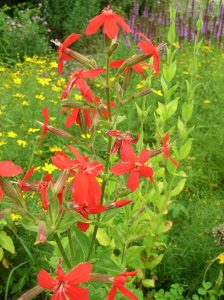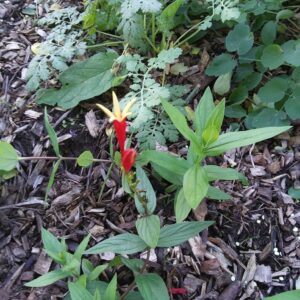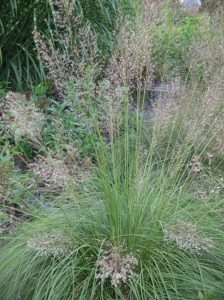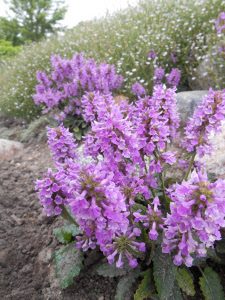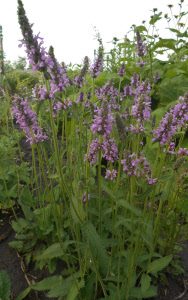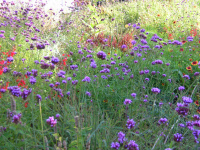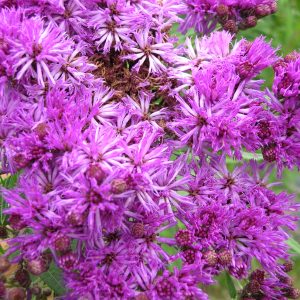Plants for Hummingbirds
Showing 73–80 of 82 results
-
Silene regia Royal catchfly Z 5-8
True crimson stars, brighter than a stop light
OUT OF STOCK
True crimson stars, brighter than a stop light, in July – September, from the prairies.
Size: 2-3’ x 1-2’
Care: sun to part shade in moist well-drained soil
Native: from Ohio to Alabama W. to Nebraska, WI native
Wildlife Value: hummingbird favorite.In Greek mythology Silene was a companion of Bacchus who was covered with foam. French plant hunter Andre Michaux may have been the 1st to collect this c. 1800. Grown from seed collected by English planthunter Thomas Nuttall (1786-1859) near St. Louis on the Mississippi River c. 1812.
-
Spigelia marilandica Carolina pink, Woodland pinkroot Z 5-9
Stems topped with showy red tubes and fireworks-like yellow, five-pointed stars flare atop the tubes in late spring to early summer and later in the north. Deadhead for rebloom
OUT OF STOCK
Stems topped with showy red tubes and fireworks-like yellow, five-pointed stars flare atop the tubes in late spring to early summer and later in the north. Deadhead for rebloom
Size: 12-24” x 6-18”
Care: part to full shade in moist to moist well-drained soil
Native: NJ to Fl west to TX
Wildlife Value: nectar for hummingbirds; deer resistant
Awards: Pennsylvania Horticultural Society Gold Medal 2023Cherokee used this to purge parasites from intestines. In garden by 1753. Philip Miller’s Dictionary “the plant “is esteemed as the best medicine (in North America) yet known for the worms.” (1768) According to Jacob Bigelow in American Medical Botany, 1817 one doctor used it as a purgative and another as a narcotic.
-
Sporobolus heterolepsis Prairie dropseed Zone 3 – 9
Mound of graceful thinnest of grass blades
The description in the Chiltern Seeds catalog cannot be improved: “This is the most elegant and refined of the North American prairie grasses …the finest texture composed of the thinnest of thin, thread-like, glossy green blades,.. in autumn turning deep orange before fading to a light copper for the winter. In late summer the plants bear, on very slender stalks high above the foliage, unbelievably delicate, graceful flower panicles, excellent for cutting. ”One of internationally known garden designer Piet Oudolf’s 100 “MUST HAVE” plants, Gardens Illustrated 94 (2013)
Size: 2’ x 2’
Care: Full sun in well-drained soil
Native: from Canada in the north to Texas in the south, Wisconsin native
Wildlife Value: seeds are food for birds
Awards: Missouri Botanic Garden Plant of Merit & Great Plants for Great Plains Grass of the Year.Sporobolos is Greek from sporo meaning seed and ballein meaning to cast forth because the seed readily falls from the flower (or dropseed, the common name). Ojibwa “Medicine Society” used roots to cure sores & “remove bile.”
-
Stachys minima syn. Stachys spathulata Dwarf betony Z 5-9
Atop a mound of spatula-shaped, crinkled leaves with scalloped edges rises a bounty of 4 to 5 inch tall spikes, each crowned with a hoard of tiny fuchsia-colored trumpets blowing their horns “look at me” in early to mid-summer.
OUT OF STOCK
Atop a mound of spatula-shaped, crinkled leaves with scalloped edges rises a bounty of 4 to 5 inch tall spikes, each crowned with a hoard of tiny fuchsia-colored trumpets blowing their horns “look at me” in early to mid-summer.
Size: 4-8" x 8-12" spreading slowly by rhizomes
Care: sun to part shade in moist well-drained soil
Native: South Africa
Wildlife Value: Deer resistant. Attracts small bees and butterfliesEnglish adventurer and naturalist William John Burchell (1781-1863) scoured South Africa from 1803 to 1815 collecting more than 50,000 specimens packed in 48 crates. In places unexplored he found insects, animals, fish and unknown plants, this being one. Although he published two volumes of his exploration, he did not finish the last, third volume, leaving another to write the botany. Premier English botanist George Bentham (1800-1884) took up the task authoring Labiatarum Genera et Species, published in 1834. He wrote the first published description and named this tiny plant with outsized charm.
-
Stachys officinalis syn. Betonica officinalis syn. Stachys betonica Bishop’s wort, Betony Z 4-8
Showy reddish-purple spikes of two-lipped tubes in May and June
Showy reddish-purple spikes of two-lipped tubes in May and June
Size: 18-24” x 12-18” slowly spreading
Care: sun in moist well-drained soil
Native: Europe and Asia
Wildlife Value: deer & walnut tolerant, attracts hummingbirdsOnce one of the most honored herbal medicines. Medicines were good if they had “as many virtues as Betony.” John Sauer, Colonial herbalist claimed “there is no illness brought on by cold in which Betony cannot be administered effectively.”
-
Symphoricarpos albus Snowberry Z 3-7
Small pink bell-shaped flowers turn into copious clusters of round, white berries, like miniature snowballs, grace this shrub from late summer through winter.
OUT OF STOCK
Small pink bell-shaped flowers turn into copious clusters of round, white berries, like miniature snowballs, grace this shrub from late summer through winter.
Size: 3-6’ x 3-6’
Care: sun to part shade in moist well-drained to well-drained soil
Native: Canada east to west coasts; US all states north from Virginia to California. Wisconsin native.
Wildlife Value: deer tolerant, attracts numerous birds including Hummingbirds, Towhees, Grouses, Robins, and Waxwings for nesting and food, although the fruit is poison to humans. Bees flock to the flowers’ pollen. Host for caterpillars of the Snowberry Sphinx moth and Snowberry Clearwing moth.Pauites of Oregon constructed cradle boards with the wood, sharpened the stem for digging tool and used its branches in a game of dice. The Nez Perce boiled sticks in water then used to remedy fevers, and encircled its branches around cradleboards to protect babies from ghosts. Flathead cured injured eyes with juice for the fruit and made a paste of its fruit, bark and leaves to remedy skin ailments and burns. For the Blackfoot the smoke from burning twigs blackened newly made pipes. Sioux made a diauretic from the fruit. Ojibwa speeded up convalescence for new mothers after giving birth with water infused with this. Shoshone made arrows from shoots for small birds. Collected for botany before 1753. Also collected on Lewis and Clark Expedition along the Missouri River west of Council Bluffs.
**LISTED AS OUT OF STOCK BECAUSE WE DO NOT SHIP THIS ITEM. IT IS AVAILABLE FOR PURCHASE AT OUR RETAIL LOCATION.
-
Verbena bonariensis Perennial Z 7-10, colder zones-reseeding annual
Small purple flowers atop tall leafless stems from July to October. Great see-through blooms for growing in back, middle or front of the garden.
Small purple flowers atop tall leafless stems from July to October. Great see-through blooms for growing in back, middle or front of the garden.
Size: 3-4’ x 8”
Care: full sun in moist, well-drained, fertile soil - self-seeder
Native: South America
Awards: Royal Horticultural Society Award of Merit & Missouri Botanic Garden Plant of Merit.Introduced to garden cultivation from its native Buenos Aires in 1726 by the Sherard brothers.
-
Vernonia fasciculata Prairie Ironweed Z 3-7
Dense clusters of true royal purple July-September
OUT OF STOCK
Dense clusters of true royal purple July-September
Size: 3-4’ x 2-3’
Care: sun to part shade in moist to moist well drained soil
Native: so central Canada to central & eastern US
Wildlife Value: Butterfly attractor – Fiery skipper, deer & rabbit resistant.Lakota Sioux: “The leaves are formed into a sort of “plate” that keeps foreign matter from getting on meat. An infusion of the root is used to regulate menstrual periods.”
Collected by French planthunter André Michaux (1746-1802) who spent 11 years exploring America for plants. Named to honor Wm. Vernon (1666-1711) English botanist who collected plants in late 1600’s.

